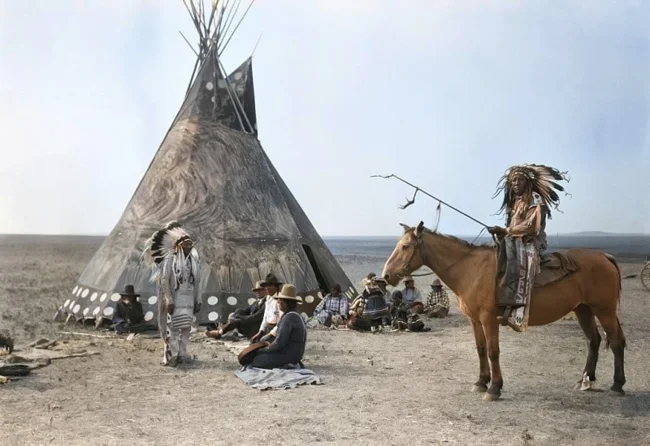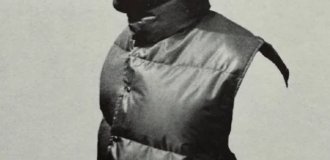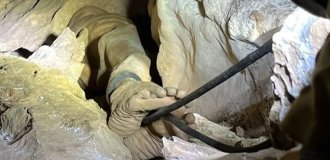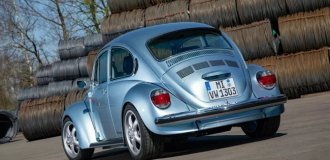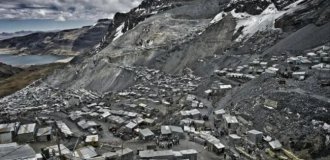Unique historical footage that will take you back in time (21 photos)
These are not just historical shots - they are a real journey through the centuries, where each color photo becomes a window into the era of great discoveries, social upheavals and cultural revolutions. 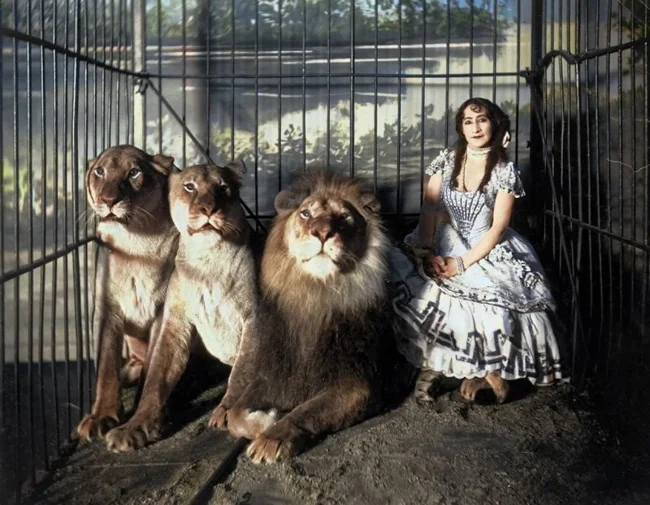
Shellfish sellers. Great Britain, 1877. 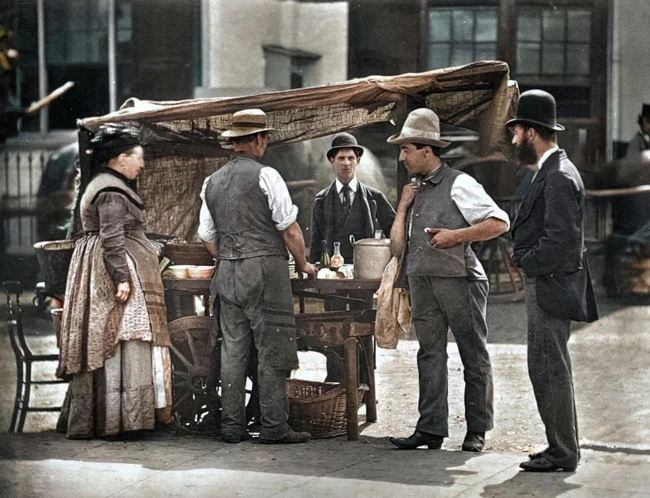
Photographer: John Thompson
Sanssouci Mill. Potsdam, Germany, late 19th, early 20th century.
The mill was built in 1851–56 by order of Frederick William IV of Prussia, the brother and successor of Frederick the Great. Its design was developed by the famous Prussian architect Ferdinand von Schede, who was at the origins of the romantic movement in Biedermeier architecture. It is interesting that the idea to build a mill belonged to a humorous concept — it was a kind of "historical gesture" towards the educational tradition of the eternal dispute between the king and the miller, which existed in European legends and fairy tales. Thus, this mill became not only a decoration of the park, but also a symbol of the connection between the authorities and the common people. The mill is about 24 meters high, has eight corners and a terrace with a stunning view of the entire Sanssouci ensemble. Although the mill was never used for its intended purpose — for grinding grain — it played an important role as a recreational and symbolic structure: members of the royal family rested here, took walks and had social conversations. In 1945, during the war, the mill was destroyed. In the early 1980s, a large-scale restoration of the historic Sanssouci mill, built at the end of the 18th century — presumably in 1787-1791, began. This object, which became part of the famous architectural ensemble, was brought back to life after many years of neglect. The final chord of the restoration work was 1993, when in honor of the solemn anniversary - the 1000th anniversary of Potsdam - a new mill mechanism was installed and launched at the mill. 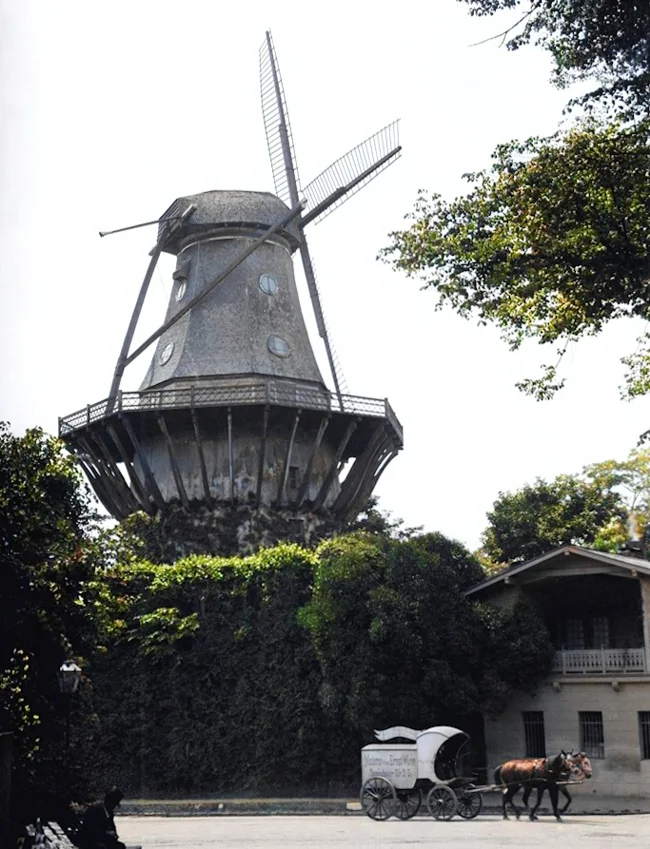
Arab water carriers. Egypt, late 19th century.
Water carriers were workers who, for money, delivered water from the Nile, public wells or fountains to the homes of city dwellers. It was hard, but extremely necessary work. Water was carried in large leather bags made from whole animal skins (usually sheep or goats), hermetically sewn. These bags were called "mashk". The water carrier carried such a bag on his back or shoulders, sometimes donkeys or small carts were used to deliver larger volumes of water to more remote areas. The price of water depended on the distance, the quality of the water and the season (demand increased in summer). 
A canal in old Shanghai, China, 1870.
Among the greatest engineering achievements of mankind, a special place is occupied by the Grand Canal - the oldest hydraulic structure, which continues to be in operation. This gigantic waterway, stretching for thousands of kilometers, is not only the longest shipping canal in the world, but also a living testimony to China's thousand-year history. The construction of the Grand Canal took place in waves over two thousand years - from the 6th century BC to almost the 13th century AD. It united disparate rivers and waterways into a single transport artery, which played a key role in the economy and culture of the Celestial Empire. And today the canal remains a vital communication: goods move along it between the country's largest ports - Shanghai and Tianjin, connecting the interior regions of the PRC with the seas and world trade routes. 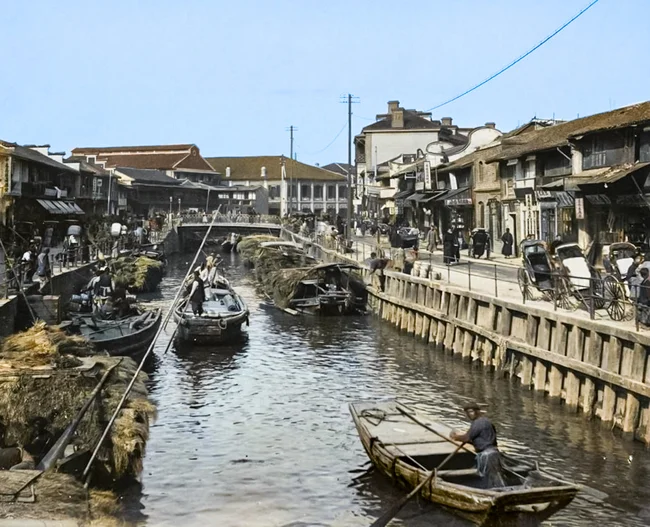
Reed sellers. Persia, late 19th - early 20th century. 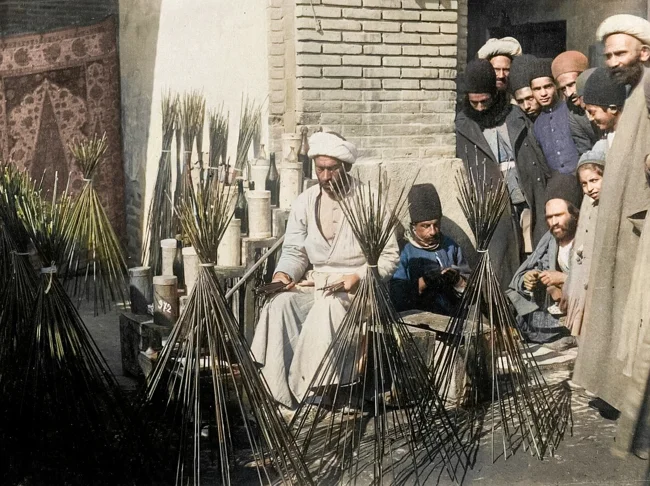
Photographer: A. Sevryugin.
Nebraska, USA, 1887. 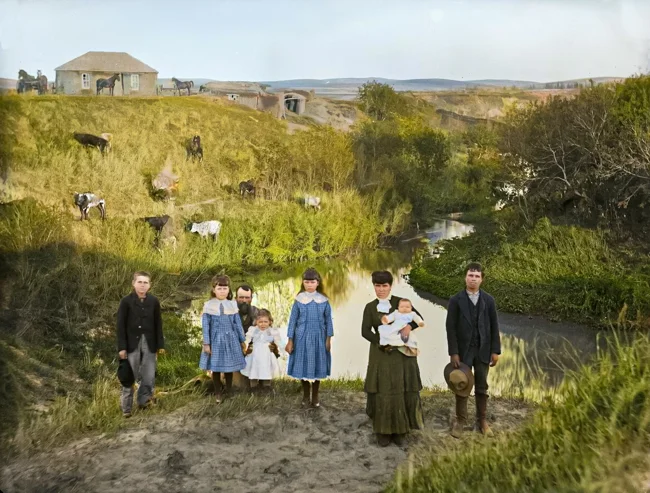
In the wine cellar. France, 1890.
To say that wine is just a drink for the French is to say nothing. It would be like calling Mozart's music simply "sounds." For the French, wine is culture, tradition, art, and even everyday philosophy. France is a country where wine has become an integral part of national identity. It is present at the family table, at weddings and funerals, on holidays and weekdays. Each region has its own varieties, its own secrets of aging, and its own characteristics of the soil and climate - from Burgundy Chardonnay to Bordeaux blends. The culture of wine consumption includes knowledge of origin, respect for winemakers, and an understanding of pairing with food. It is not just alcohol - it is a dialogue between man and the land, between generations of winemakers and the modern consumer. 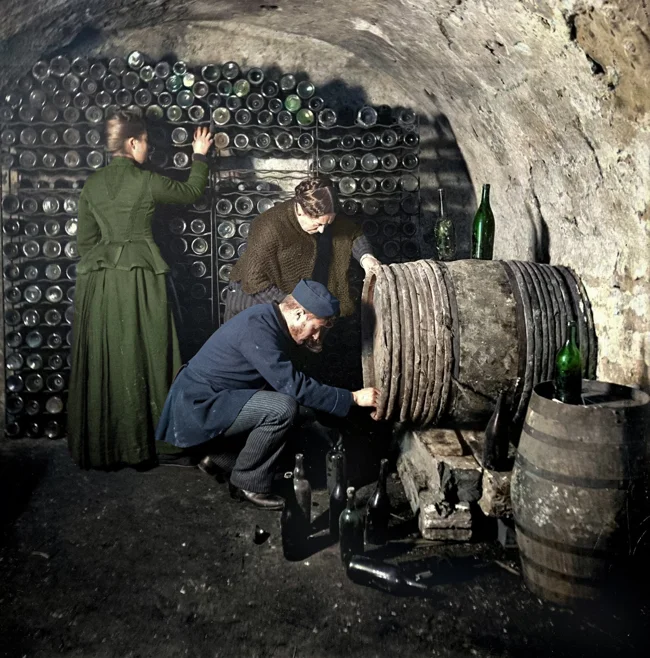
Photographer: Henri Roger.
Peasant girl from Gutach, Germany, 1895. 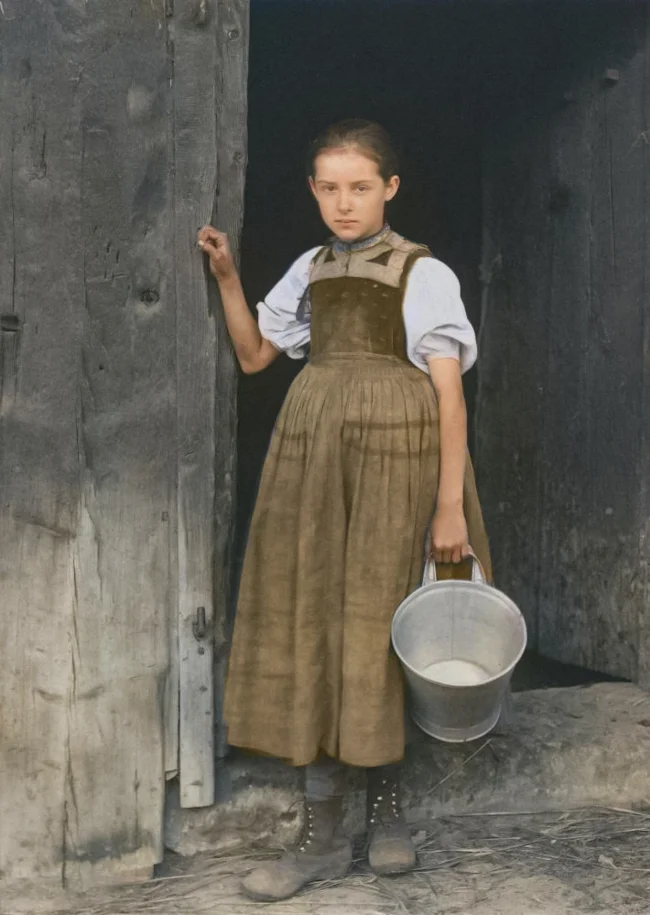
Photographer: Alfred Stieglitz
House with cherry tree by Jean-Jacques Rousseau (1712-1778), Franco-Swiss writer. Near Thon (Haute-Savoie), 1895. 
A statue from Easter Island on board an English ship, during transportation to England, 1868.
This event took place as part of an expedition under the flag of the British Navy. The ship Topaze, sent to map and explore the South Pacific territories, visited Easter Island (Rapa Nuyu) in March 1868. The commander of the expedition, Captain Bertram Story, decided to bring one of the ancient statues as an "exotic gift" for the royal collection. The statue was carefully dismantled from one of the plateaus of the island - probably from the territory of Rano Kau. The locals helped to dig it up and lower it to the shore, of which there were very few left by that time: the mass slave trade and diseases brought by the Europeans had seriously reduced the population. Delivering the statue from land to the ship was no easy task. The statue weighed about 4-5 tons and was almost two meters high. Wooden rollers and ropes were used to lower it from the hill. According to the expedition participants, the locals demonstrated amazing coordination and knowledge of the technology for moving stone giants - the very ones that had been a mystery to scientists for centuries. On the ship, the statue took a central place on the deck. It was carefully secured so as not to be damaged by the rocking. After a long journey across the Pacific and Indian Oceans, the statue arrived in London. In 1869, it was transferred to the British Museum, where it received the number EA 1716 and was named "Hoa Hakanania" - "long face", which symbolizes respect for ancestors. The statue is currently located in the same place. 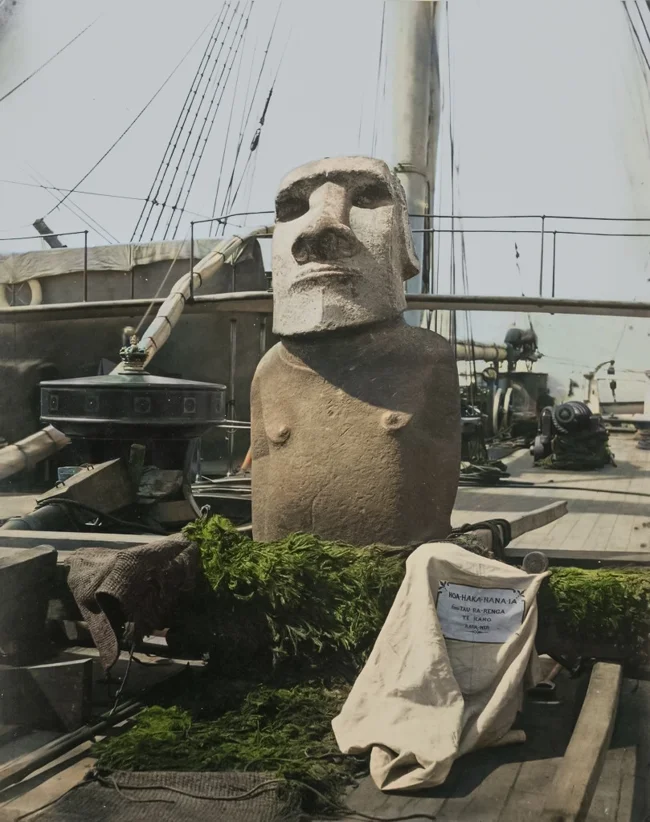
Captain's Huts, Boulogne, 1857. 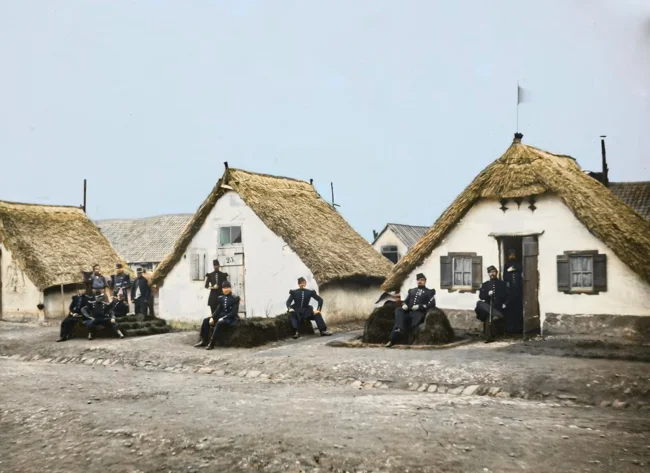
Photographer: Charles Thurston Thompson
House of the Koyari people. Papua New Guinea, 1886.
One of the main reasons for building such houses was survival. In dense forests and tropics, people encountered dangerous animals - tigers, crocodiles, snakes. A house at a height provided safety from both predators and enemy tribes. 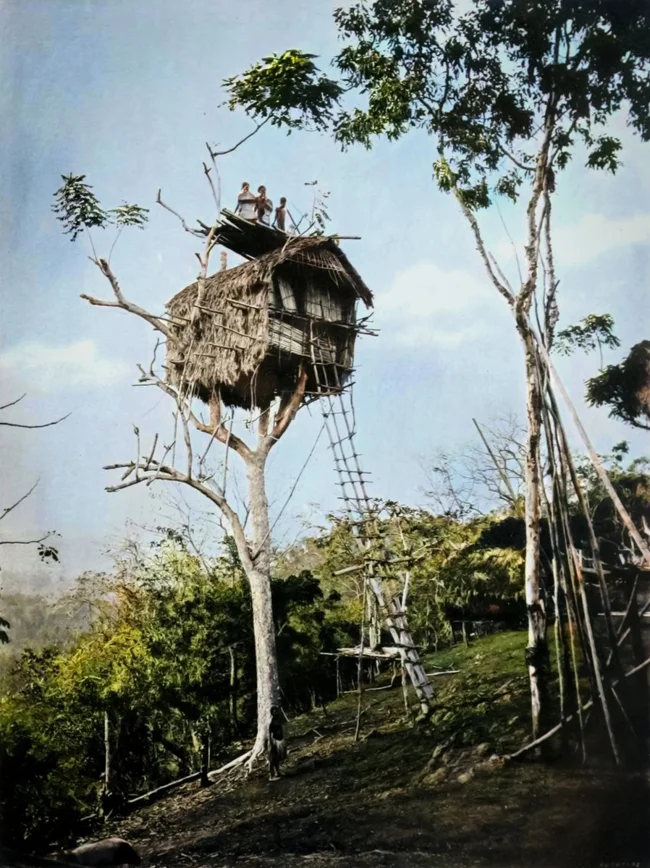
A gondolier (boatman) on a canal among residential buildings in the city of Venice. Kingdom of Italy, 1900.
In the 19th century, gondoliers were the main means of transportation around the city. Without them, it was impossible to imagine the daily life of city residents, the delivery of goods, or even social connections between districts. Every morning boats filled the canals: someone was carrying bread from the Rialto market, someone was taking a doctor to a patient, and someone was taking an aristocrat to an evening ball. The work was hard. The gondolier rose at dawn, checked the gondola, cleaned its famous iron nose (ferro), which served as a counterweight, decoration, and a symbol of belonging to a certain area of the city. He had to know every turn, every underwater rock, every high and low tide in order to guide the boat without delays. The profession of a gondolier was passed down from generation to generation. It was a craft surrounded by respect and even a certain romantic aura. They spoke a special language - a mixture of Venetian dialect and rowers' jargon. Many of them had a sharp mind, were distinguished by their eloquence and could earn money not only from physical labor, but also from their knowledge of the city. Many European writers and travelers of that time — from Hugo to Dickens, from Stendhal to Turgenev — noted in their notes the special character of gondoliers: their confidence, self-esteem, and even the musical voice that beckoned passengers. 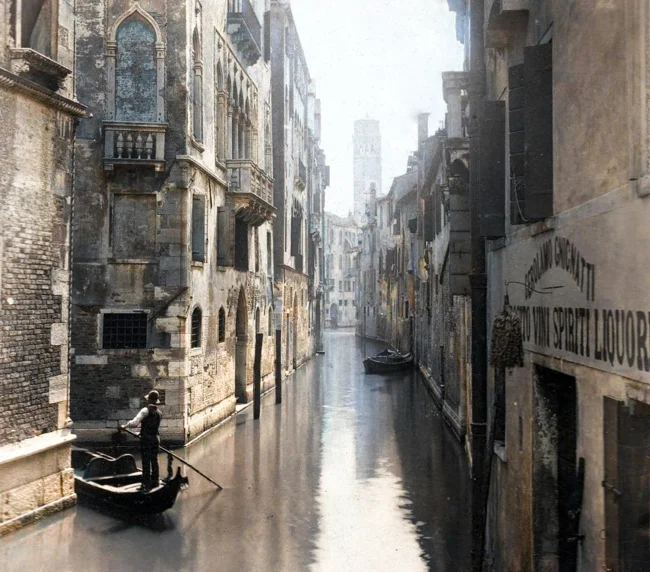
New York, 5th Avenue, 1897. 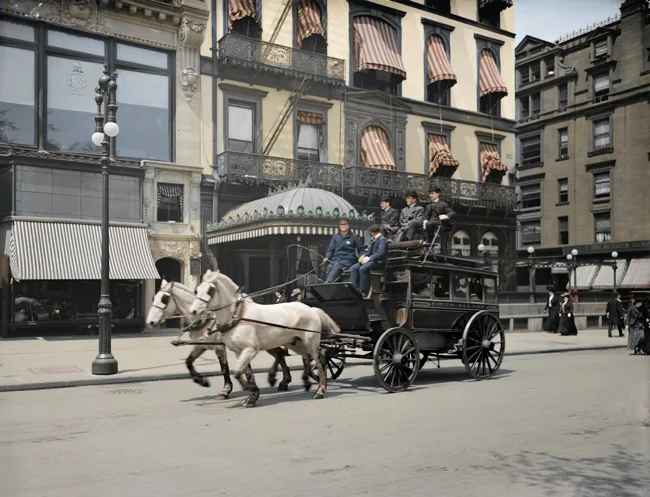
Experiments with a balloon conducted by Ernest and Roger Viollet. Brunoy, France, 1891. 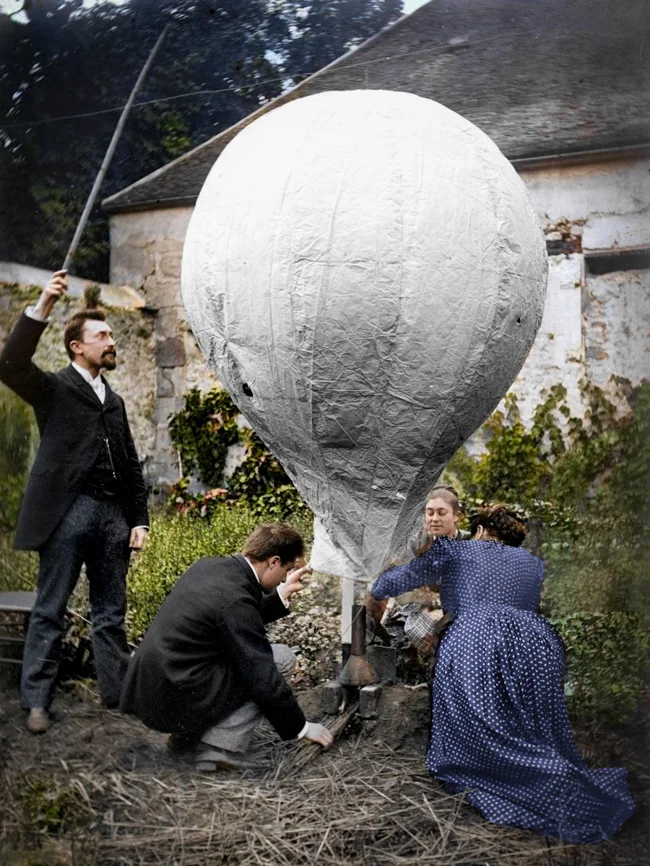
Photographer: Roger Viollet
Adji the trainer sits in a cage with a lion and two lionesses, 1899. 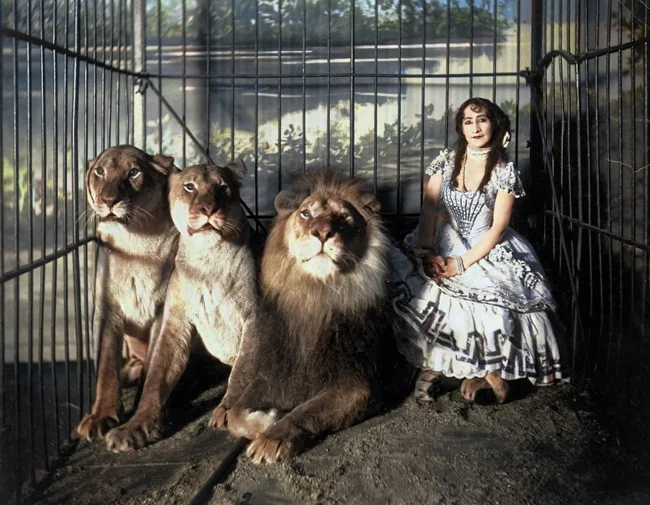
A stagecoach on the high bridge on the Ouray Stage Line between the mining towns of Ouray and Silverton. Colorado, USA. Circa 1890. 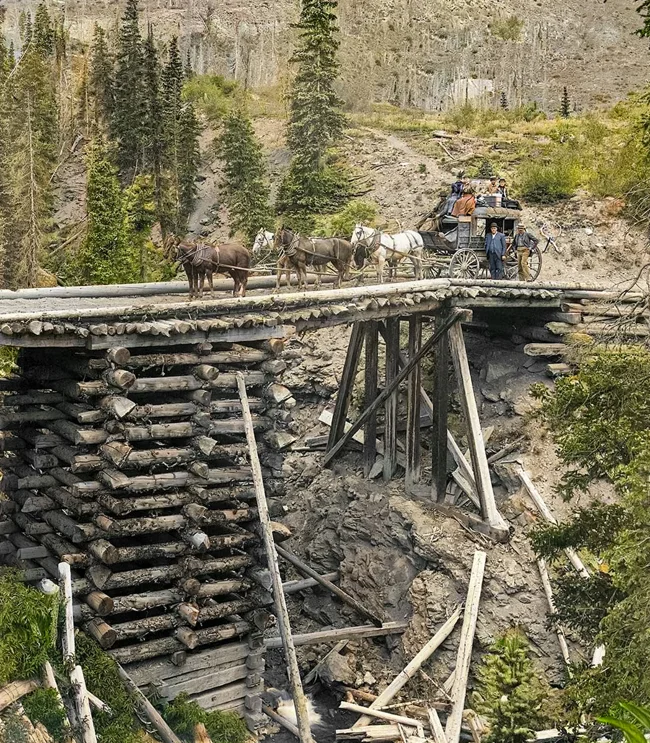
Edinburgh Castle. Edinburgh, Scotland, 1885.
Against a backdrop of rainy skies and rolling hills, thick fog and the sound of bagpipes, stands one of Europe’s most recognizable fortresses: Edinburgh Castle. It doesn’t just grace the capital of Scotland; it holds its history like an ancient safe, full of legends, battles and royal glory. Situated on the volcanic rock of Castle Rock, the castle dominates the city from a height of 130 meters. Its silhouette is visible from almost anywhere in Edinburgh – a reminder that the past is never far away here. 
Photographer: George Washington Wilson
Men at a sawmill, late 1880s. 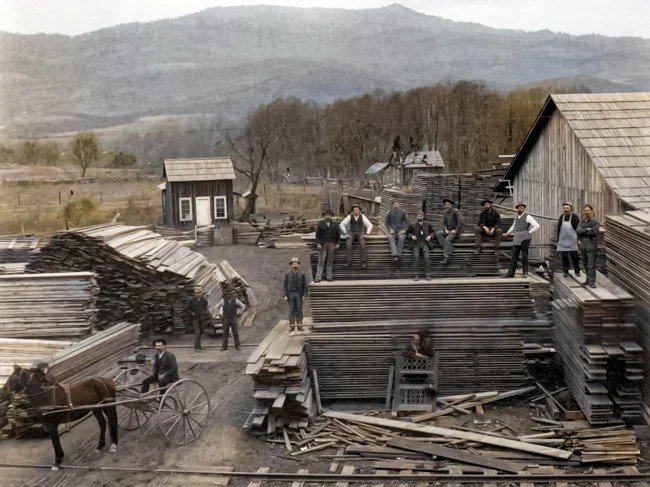
Photographer: Mark Jay Goebel
Indian settlement on the Great Plains, 1890. 